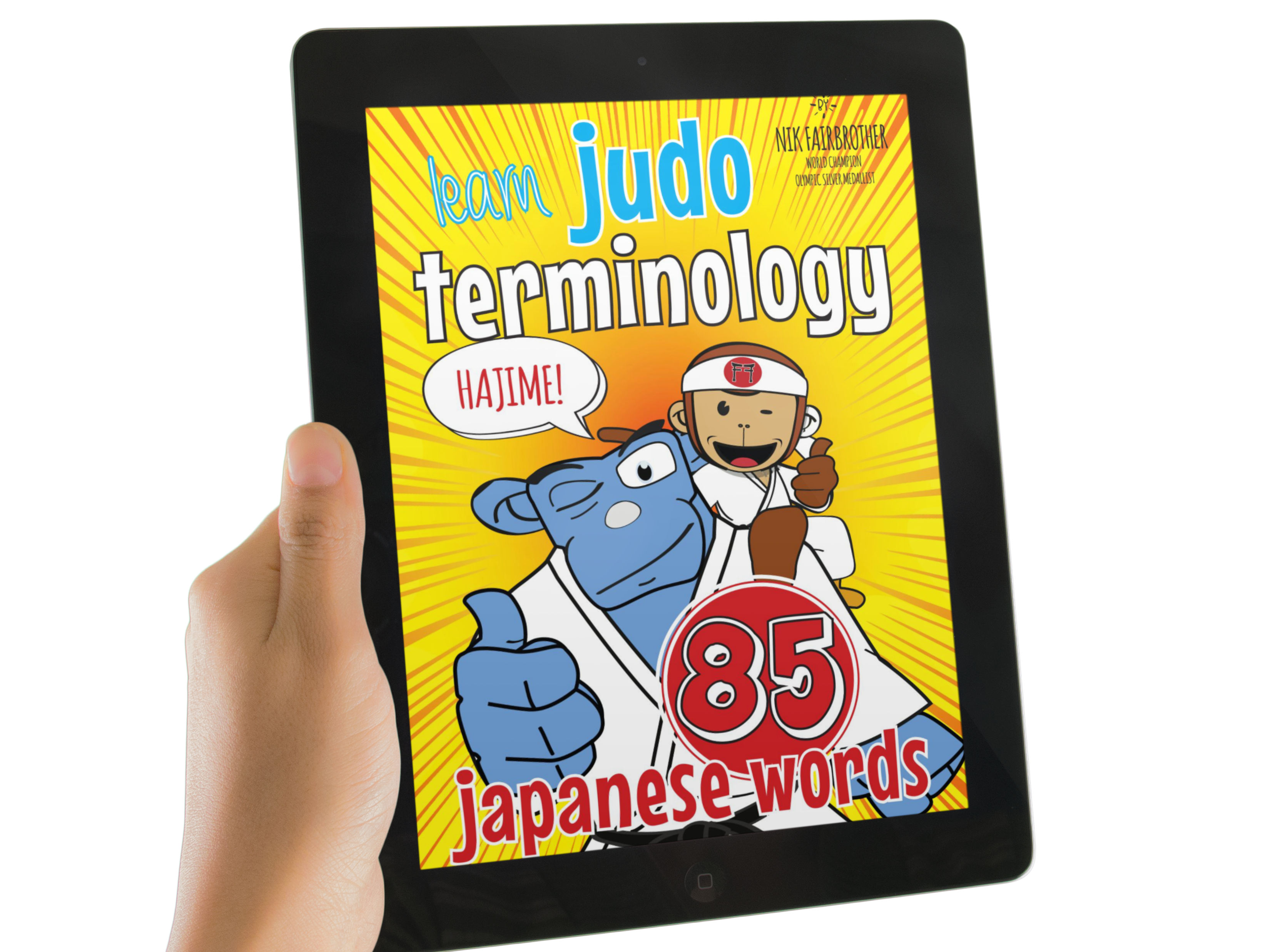Judo Techniques – your questions answered

Judo Techniques – your questions, answered!
Judo techniques can be split into to two main groups: groundwork (newaza) and judo throws (tachi-waza). Within those groups you’ll find:
1. Ne-waza (groundwork judo techniques)
Groundwork (ne-waza) is made up of hold downs (osae-komi) and turnovers. Senior newaza also includes armlocks (kansetsu-waza) and strangles (shime-waza) but these are forbidden for junior judoka.
2. Nage-waza (standing judo throws)
Judo Throws (nage-waza) can be further broken down into different groups; hand throws (te-waza), hip throws (koshi-waza), foot and leg throws (ashi-waza), sacrifice throws (sutemi-waza) and counter attacks (kaeshi-waza).
Watch while you read
To help you improve your judo, we have animated all the judo techniques. As you read the judo books, watch the animations like this example of the judo throw Osoto-Gari.

Watch animations of each judo throw while you read 40 Judo Throws: Learn Every Technique.

Watch animations of different judo turnovers while you read the judo books 20 Judo Turnovers or 10 Holds.

Do you have a judo question?
How many judo throws are there?
There are 100 judo techniques that makes up the Kodokan List of Judo Techniques, 68 of those are Nage-waza (judo throws) and 32 are Katame-waza (groundwork).
In 1920 the Kodokan revised the Gokyo No Waza to include 40 principle throwing waza. You can find our complete guide to al the judo techniques in the Gokyo here. Or to to the Kodokan Judo Institute website to find out more.
How do judo throws work?
Judo throws work by unbalancing your partner. Once you find that imbalance, the trick is to move, trip, rotate your opponent in that direction, so they completely lose balance and you can throw them onto their back to score ippon.
How to do judo techniques?
The best place to learn judo techniques is in a dojo (judo hall) with a sensei (judo coach) to show you. A judo throw has several stages to learn: the breaking of balance, the grip, the entry, the footwork, the lift, the rotation and the finish. See how to do a judo throw.
How to practice judo throws alone?
If you can not get to a dojo, then it is possible to practise judo throws alone, using resistance bands or shadow judo (tandoku-renshu). We have some tips and exercises here.
How to practice judo techniques at home?
Make sure you ask the permission of your parents or guardian, and let your judo coach know you are training at home too as they will have ideas and advice. It is better to practise only the entry of the throw and not the finish if you are at home and without a proper judo mat. Try the Uchikomi Challenge.
How to counter judo throws?
All judo techniques can be countered. To counter a technique, anticipate the entry. Be ready with your counter attack. Use your partner’s force and turn it to your own advantage.
Is judo just throws?
No, judo is about a lot more than throws! There are lots of groundwork techniques to learn. Also it is important to learn the judo moral code and judo’s philosophy.
What are the main judo throws?
The main judo throws could be considered to be Morote-Seoi-Nage, Tai-Otoshi, Uchi-Mata, Osoto-Gari, Kouchi-Gari, Ouchi-Gari and Okuri-Ashi-Barai. However there are many, many more to learn. A good place to start is by learning The Gokyo.
What are the best judo throws?
The best judo throws (if we define best by most effective), the throws that statistically score highest, the best judo techniques at an Olympic Games are Morote-Seoi-Nage, Tai-Otoshi, Kouchi-Gari, Ippon Seoi-Nage and Uchi-Mata.
But often each individual judoka will have their own list of best judo throws chosen depending on what suits their style and physique. Each judoka will often specialise in what they consider their tokui-waza (best or favourite throw).
What is an ashi-waza?
An ashi-waza is any technique that uses mainly the leg or foot. Judo throws like uchi-mata, ashi-guruma, hane-goshi all fall into this category.
See five easy ashi-waza for beginners to learn.
Does judo have groundwork?
Yes it does. Groundwork is called newaza and (in junior judo) it consists of hold downs and turnovers. Check out our groundwork judo books to learn more about newaza judo techniques.
How do you win at groundwork judo?
To win on the ground you must hold your opponent down for 20 seconds.
Do judo throws hurt?
No. All judoka learn to fall safely, by rolling and breaking their fall with Ukemi. This breakfall absorbs the impact of the throw.
Does judo have kicks?
No judo doesn’t have kicks, but judoka do use their legs. Lots of judo techniques are done by using your feet and legs. These judo throws are known as ashi-waza.
What does judo mean?
Judo is a Japanese word and translates to mean The Gentle Way in English. Find the meaning of more judo words here.
What is an ippon?
An ippon is the maximum score in judo, an outright win. In junior judo, you can score ippon either by throwing your partner or by holding them down.

Judo Techniques Books
We have some of the best judo books for beginners, intermediates and advanced junior judoka. Learn judo techniques with step by step illustrations.
You can buy these judo technique books on amazon – see the collection.
Choose your book!
40 Judo Throws
Get reading and learn how to do 40 different judo techniques. A great book for intermediate or advanced judoka.
20 Judo Turnovers
Read and improve your ground work judo, with this book that teaches how to turn you partner onto their back from any defence.
Learn the Hold Downs
Read all the tips as you master the 10 key hold downs of judo. And have fun trying to conquer the challenges. This book is great for beginner judoka.
Learn how to Breakfall
Learn to roll and fall safely, as you read and discover how to do all the judo breakfalls. Another great book for those starting judo.
20 Judo Drills
Read the training tips to improve ten essential judo throws. You will learn how to do each throw, then follow two exercises to improve that techniques.




